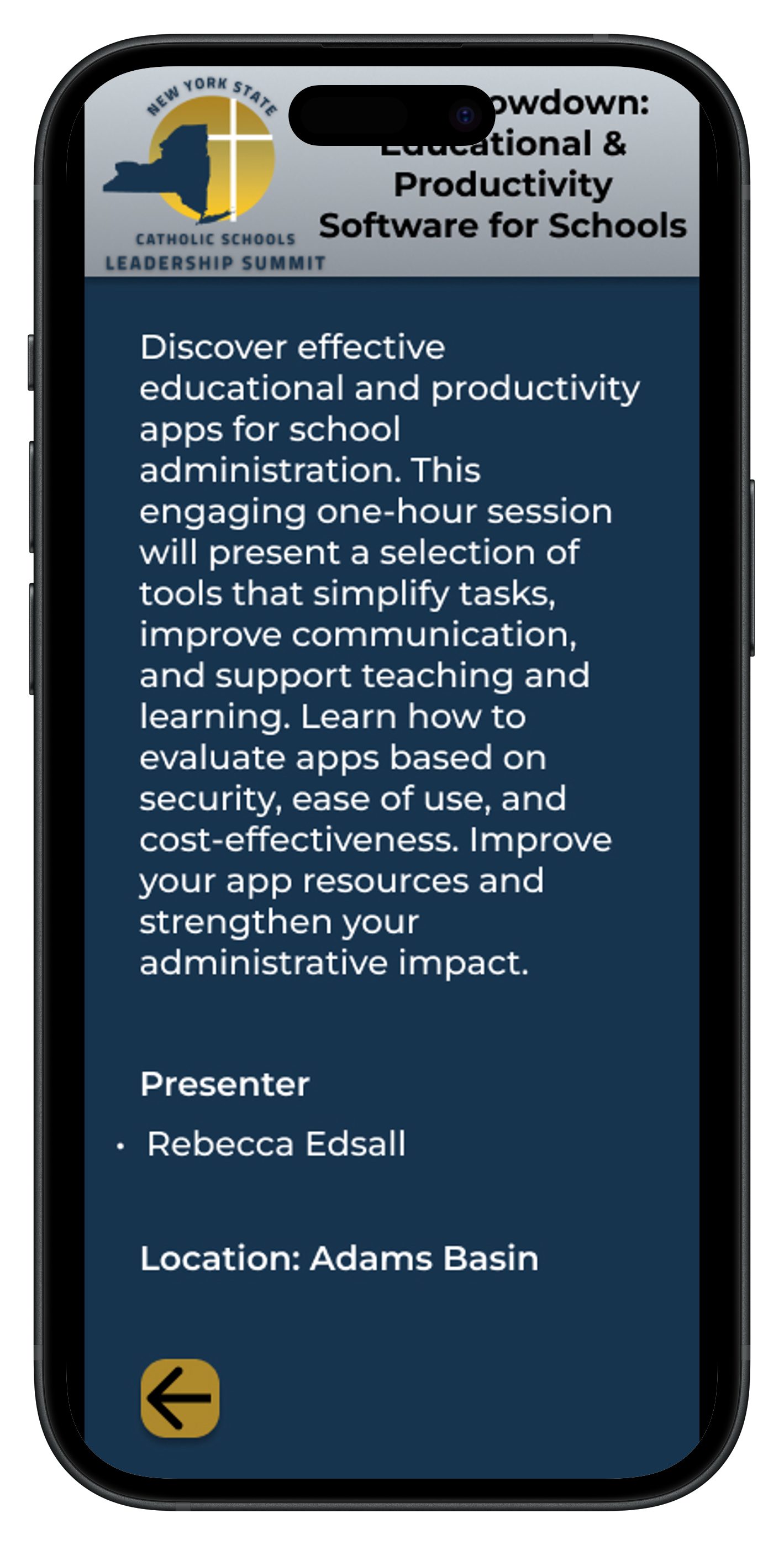Catholic Schools Leadership Summit Itinerary
A mobile-friendly, QR-accessed schedule app designed for simplicity and ease of use at a statewide leadership event.
Role: UX Designer
Tools: Figma, Google Forms, Pen & Paper
Timeline: June–July 2025 (roughly 2 weeks)
Deliverables: Interactive itinerary prototype, user journey, client presentation
The Challenge
The summit needed a simple, mobile-accessible itinerary solution that didn't require attendees to install an app or navigate complex UI. Since the primary audience was not tech-savvy, the design had to be intuitive, clear, and easy to access via QR code.
Goals
Make the itinerary accessible with one tap via QR code
Keep navigation intuitive and labels clear
Design for mobile-first interaction
Enable users to reopen the app easily throughout the event
Design Process
Step 1 – User Journey Mapping
Mapped how attendees would interact with the app from arrival to event close, identifying key points of confusion and drop-off.
Step 2 – Wireframes
Sketched layout options focused on high legibility, clear buttons, and no extraneous content.
Step 3 – Lo-Fi Prototypes
Created and iterated through 3 low-fidelity versions in Figma, refining flow and visual clarity.
Step 4 – Hi-Fi Design
Finalized a polished, mobile-optimized prototype with real content and minimal interactions to reduce cognitive load.
Step 5 – Client Presentation
Presented the full design and user flow to stakeholders for review. Incorporated their feedback to make final refinements.
The Solution
Daily schedules with session details
Simple navigation between days
Re-accessible at any time with QR codes posted throughout the venue
Key Screens
Outcomes
Successfully deployed as the primary itinerary experience for attendees
QR-based access tested and confirmed on multiple mobile devices
Positive feedback from stakeholders on usability and clarity
What I Learned
Designing for simplicity takes intention. This project taught me how to prioritize usability over flash, especially when designing for audiences who may not be comfortable with tech. It also reinforced the value of testing, iteration, and presenting design clearly to stakeholders.




